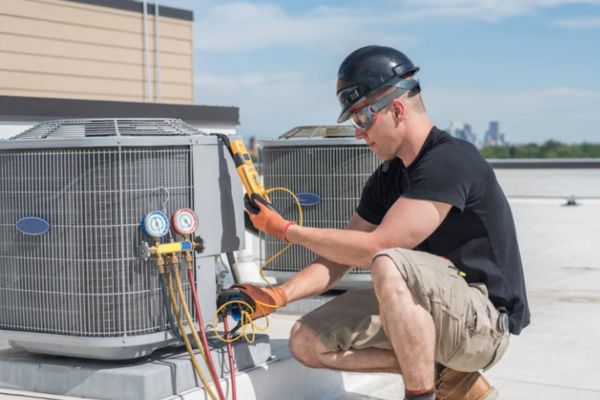When it comes to heating your home, choosing the right furnace is a critical decision that impacts comfort, cost, and energy efficiency. Homeowners typically choose between gas and electric furnaces, each offering distinct advantages depending on personal needs and location.
Why an Efficient Energy System Matters
Energy efficiency is one of the most important factors to consider when selecting a furnace. A more efficient system can lower utility bills and reduce environmental footprint.
- Gas Furnace Efficiency: Gas furnaces generally offer higher efficiency for homes in colder climates. Modern gas furnaces can reach up to 98% efficiency, making them a strong option for regions where heating is required for extended periods.
- Electric Furnace Efficiency: While electric furnaces tend to be less efficient in terms of converting electricity into heat, they are 100% efficient in utilizing the energy they receive. However, the cost of electricity is often higher than gas, which can offset their efficiency benefits in some areas.
Initial Investment: Installation and Equipment Costs
Upfront costs can vary significantly between gas and electric furnaces. It’s crucial to weigh these costs against long-term savings.
Gas Furnace Installation: Gas furnaces are generally more expensive due to the need for venting and gas line connections. Depending on your home’s infrastructure, the installation could involve additional expenses, such as chimney liners or new ductwork. On average, the total installation cost for a gas furnace can range between $3,000 and $7,000, depending on the complexity of the installation and the size of the furnace.
Electric Furnace Installation: Electric furnaces are typically more straightforward and cheaper. Without gas lines or flues, the installation process is more straightforward, resulting in lower labor costs. However, depending on the size of your home, you may need a higher-capacity electric system, which can increase the initial expense. On average, installing an electric furnace ranges from $2,000 to $4,000, making it a more affordable option upfront than gas furnaces.
Operational Costs Over Time
While installation costs are a one-time expense, operational costs will influence your budget for years. Understanding these ongoing costs is essential for choosing the most cost-effective option for your home.
Gas Furnace Operating Costs: Natural gas is usually cheaper than electricity, making gas furnaces more affordable to operate in many regions. However, gas prices can fluctuate based on local supply and demand, so it’s important to monitor changes in fuel costs.
Electric Furnace Operating Costs: Electric furnaces tend to have higher operational costs due to the relatively high price of electricity. However, if you live in a region with mild winters or have access to renewable energy sources, electric furnaces may offer a more cost-effective solution despite higher per-unit energy costs.
Longevity and Maintenance: What to Expect
The lifespan and maintenance requirements of your furnace can affect both your convenience and long-term investment. Proper upkeep is key to ensuring a furnace’s longevity.
Gas Furnace Lifespan and Maintenance: Gas furnaces generally last 15 to 20 years and require regular maintenance. They require annual servicing to check for gas leaks, burner performance, and overall efficiency. Gas furnaces have more mechanical parts than electric models, which means a higher chance of needing repairs.
Electric Furnace Lifespan and Maintenance: Electric furnaces often have a longer lifespan, typically 20 to 30 years. They have fewer moving parts and are generally easier to maintain. While they don’t require as much regular maintenance as gas furnaces, keeping them in good working order is still important to prevent breakdowns.
Environmental Considerations
As homeowners become more eco-conscious, the environmental impact of heating systems plays a bigger role in decision-making. Gas and electric furnaces differ significantly in this regard.
Gas Furnace Environmental Impact: Gas furnaces produce carbon emissions by burning fossil fuels. While modern systems are designed to be as efficient as possible, they still contribute to greenhouse gas emissions, which can affect the environment over time.
Electric Furnace Environmental Impact: Electric furnaces, on the other hand, do not produce direct emissions. However, the overall environmental impact depends on how the electricity is generated. If your home is powered by renewable energy sources such as solar or wind, electric furnaces are the clear winner in terms of environmental sustainability.
Pros and Cons of Each Option
Choosing between gas and electric furnaces depends on various factors, including cost, efficiency, and location. Here’s a quick summary of the pros and cons of each system.
Gas Furnace Pros:
- Lower operational costs in most areas.
- High heat output, especially in colder climates.
- Reliable performance during extended use.
Gas Furnace Cons:
- Higher installation costs.
- It requires regular maintenance and has the potential for carbon monoxide leaks.
- Environmental impact due to fossil fuel use.
Electric Furnace Pros:
- Lower installation costs.
- Fewer maintenance needs and a longer lifespan.
- No direct emissions, primarily when powered by renewable energy.
Electric Furnace Cons:
- Higher operational costs in areas where electricity is expensive.
- Less efficient in extremely cold climates.
- Slower to heat compared to gas furnaces.
Choosing between a gas or electric furnace depends on your circumstances. A gas furnace may be the best choice if you live in a colder climate and need consistent, high heat output. However, an electric furnace could be a better fit if you’re looking for an environmentally friendly option or live in a region with mild winters.
Consider your budget, energy efficiency goals, and long-term plans to determine which heating system aligns with your needs. Whether you choose, investing in regular maintenance and monitoring energy usage can ensure that your furnace operates at its peak performance for years.


